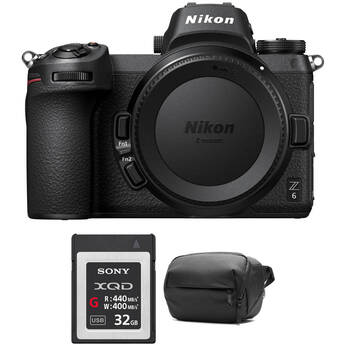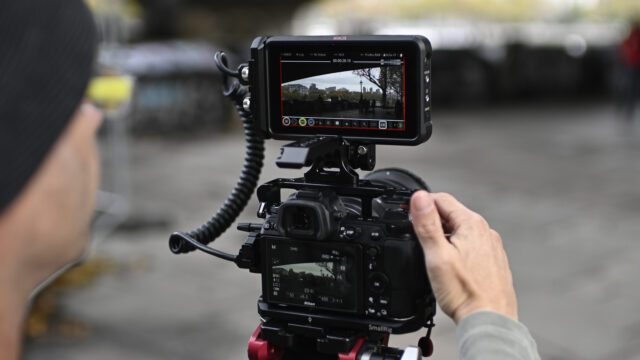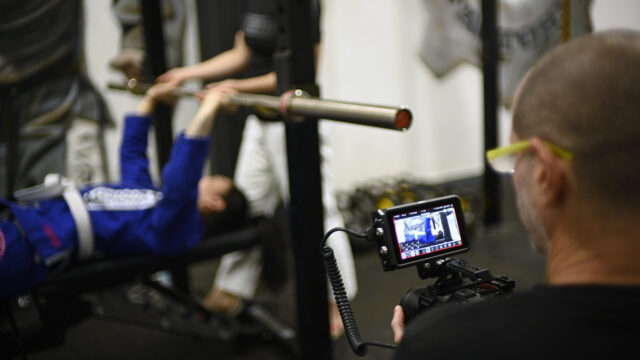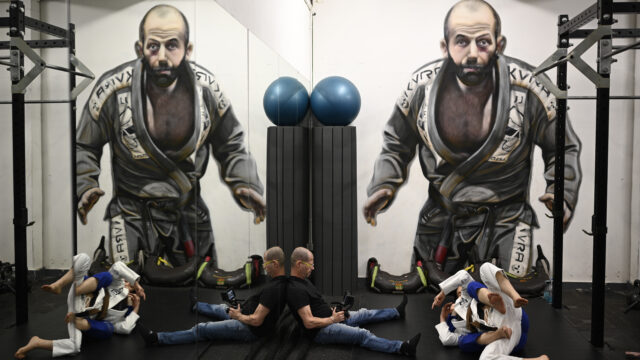Nikon Z 6 and Atomos Ninja V ProRes RAW Recording Option – First Look
Music Courtesy of MusicVine.com Get 25% off your next music license with code C5D25 (valid for one use per customer)
The Nikon Z 6 and Z 7 have been around for quite some time but now it’s getting a new life. Something that will greatly elevate its performance thanks to the collaboration with Atomos. While Nikon is bringing to the table a full frame sensor camera, 12 bit RAW output via HDMI and a flat picture profile recording option (N Log), Atomos is contributing to this duo its external monitor/recorder expertise together with the built-in Apple’s ProRes RAW 12 bit recording option. There are many “industry firsts” in this exciting combination, including transferring the information between the camera and monitor/recorder on a consumer HDMI protocol interface. Now, openly speaking, is offering full frame, up to 4K, 12 bit ProRes RAW external recording option, enough to bring Nikon back to the center of attention of the aspiring filmmakers and content creators? Please read on.
The answer might hide in the above footage or at least in the article below…Please bear in mind that my current findings and opinion are based on working with a beta version firmware of the Nikon Z 6 and Atomos monitor/recorder. It can be that some functions or operational modes will be different when the final firmware version is introduced.
Nikon Z 6 and Atomos Ninja V – Grabbing the Opportunity to Film
It’s Friday afternoon. Dan from Atomos is on the line. The first Nikon Z 6 equipped with Atomos ’s Ninja V running on a beta firmware is ready to be tested and he is kind enough to offer us the opportunity of having a short test ride. We have decided on London as a meeting location and agreed on who is bringing what. Dan the Nikon Z 6 camera, lenses, Ninja V monitor/recorder, and accessories, (namely batteries and SSD). And me? Well, whatever is needed for a small “run&gun” production. Small tripod, basic light and sound equipment but most important, patience. Since both camera and monitor/recorder are running on a beta firmware, nothing guarantees a smooth ride. And even farther, as it is London, there is absolutely ZERO guaranty to have a stable weather during December – and indeed, right after meeting each other for a short camera/monitor/recorder introduction and a much-needed coffee, we ran out just to enjoy the last sunshine rays before the dark skies took over and made us change our plans (more on that later). While listening to Dan highlighting the benefits of running with this combination, I already assumed that it is not going to be easy, because of the single reason of being “forced” to work in a way that I’m not used to on a normal basis.
I’m an old school documentary operator. I need my viewfinder stuck to my eye in order to help me judge exposure and as a bonus, act as an additional secure grip point to my body. On top, normally I don’t carry an external monitor/recorder with me as it translates into additional weight when traveling. (Of course, the plus sides of using such an external device can not be ignored as the flexibility to record in various robust codec(s) can serve many very well depending on the production they do). But anyway, to cut a long story short, from what I can see in the field, an external monitor became a must for many and I salute Atomos for doing a great marketing job in this respect.
Wait, my rambling is not over yet, but the story does take a twist…
Nikon Z 6 & Atomos Ninja V – In the Field
Turning the camera on and spending a few minutes with it on the streets of London made it very clear to me. This combination is NOT a camera with an external monitor recorder but rather a monitor/recorder with a camera attached to it… I hope it makes any sense as I’m trying to translate a “feeling” to a thing that can be understood. Here is a summary of what’s happening when connecting the Z 6 to the Atomos recorder:
- The Nikon Z 6 EVF is disabled while using the Ninja V in ProRes RAW mode (this fact alone forced me to use the monitor only while shooting)
- Proper accurate exposure can be judged on the Ninja V only! As we are talking about recording moving images in RAW, the signal is being taken directly from the sensor. Now, remember that with true RAW, de-noising is not applied, so the video output tends to be noisy and an elegant way to overcome this is by exposing to the right, meaning, overexpose your images in around 2 stops (And make sure your highlights are OK). Alternatively, one might decide on using the built in denoiser found in FCP X, or Neat Image.
- As a starting point, I needed to know the base ISO for recording video with this camera. As Nikon did not supply this information, I decided to concentrate on filming in ISO 100 and 400 as to my eyes, those values obtained the cleanest images throughout initial tests. Just too be clear here, one can surely choose higher ISO values and still get perfectly fine images! I tried shooting in up to ISO 2000 and had no issues what so ever.
So far so good?
So how should one judge the correct exposure when recording with the Nikon Z 6 together with the Ninja V in N-Log picture profile and ProRes RAW codec mode?
- For the actual visual monitoring, tune your Ninja V monitor to HLG mode. In this mode, the “overexposed” images will look correct. (Remember, we are filming in 1.5 to 2 stops over in order to combat noise especially in the darker parts of our images).
- Use the monitor’s waveform and keep peaks around the 400 IRE (In HLG). Bright sky and other highlights should not go above the 800 IRE. Expose over this value and you are risking losing your image beyond recovery.
Now I hope that my comment regarding a monitor that has a camera attached to it is clearer, as monitoring the image and exposing it correctly is ALL done on the Ninja side. In fact, the camera exhibits additional limitations while filming in the highest quality possible recording mode. (N-Log/ProRes RAW).
- High frame 4K recording is not available (Above 30p)
- No 4K DCI mode
- Autofocus functionality becomes very sluggish. Did I use the wrong autofocus settings? It can be as I’m not a dedicated Nikon user, but it seems as if the autofocus system can leave a lot to be desired.
On the positive side, the camera IBIS worked rather well and the HDMI lock (comes together with the camera), is doing a good job keeping that consumer-grade cable intact and securely connected to the camera. On top, the camera LCD is functional and has a pretty good simulation of correct exposure on the back that looks almost like the Ninja’s native HLG settings.
Remember its’ started raining a few paragraphs above? Call it luck, call it destiny, but that made Dan call Joy his friend who immediately volunteered together with Ellen, her Jiu-Jitsu “sense” to be in front of the camera and help me execute a short story that helped me to feel, work and test the camera/monitor/recorder combination. Thank you, ladies. Spending three hours together with you guys was indeed a pleasure!
Can I say the same about working with that camera combo? And what about editing, is ProRes RAW ready for primetime?
Editing ProRes RAW
In all honesty, I was pleasantly surprised how easy it was to work with the Ninja V. The monitor is bright enough to be used outdoor (at least in London). And for a moment I did not feel that it slowed me down during my short filming day. I wish I could say the same about the Nikon Z 6. I truly hope that Nikon’s engineers will try and somehow support the Atomos Ninja V in the most absolute way by allowing working with their camera with the EVF as if the monitor is not connected.
When it comes to editing, well, your best bet is Final Cut X (Mac) and EDIUS (Windows). Despite having earlier announcements, currently, this recording format is not widely supported (yet) and to put salt on the wound, no other third-part plug-in or software allows conversion to other high quality editing codecs.
Apple ProRes RAW Log Conversion/LUT workflow
Luciano, our dedicated talented editor needed to move away from his comfort zone (Adobe Premiere/ DaVinci Resolve), and with Dan’s suggestions, took the footage into FCP X and edited a nice short piece.
Here is Luciano’s workflow in case you will find yourself in the same exact position soon…
“Before importing any footage, you must open a new Library and change the Color Processing setting. To do this, select the Library, and then click “Modify” in the Inspector window. In the Color Processing Setting dialogue box, click the “Wide Gamut HDR” setting. After importing, the footage will still look as if it is overexposed, with blown-out highlights.
So, to convert the footage to a log profile, you must select a clip — either in the browser window or on the timeline — and, in the Inspector window, click on the Information tab, go to the “RAW to Log Conversion” drop-down menu and select “Sony S-Log3/S-Gamut3.Cine”. This will make the footage look flat, just like a regular Log footage. (When we edited this Apple had yet to put the Nikon RAW conversions into Final Cut Pro X, but this is expected shortly), but until then, we had to come up with our own method and as we are assuming that Nikon is using a Sony sensor, we choose the Sony preset).
We could’ve graded the footage from here, but we decided to add a LUT to it to get it to the Rec.709 color space and grade it from there. For this we used the Sony Venice Looks LUTs created by Alister Chapman (you can check them out by clicking here). These LUTs are specifically designed to be used with S-Log3 and SGamut3.cine.
To apply these LUTs, go to the “Camera LUT” menu in the Inspector window of your clip and select the Venice Look LUT of your choice. Different lighting conditions in the footage require different LUT settings, so in this step, I used the one that best represented the exposure values of each clip. You can then copy/paste the LUT settings to clips with similar lighting conditions to streamline the process. After this, we just made additional adjustments to the footage using the FCPX color correction tools”.
Conclusion
I have to divide my observation and thoughts to sections as we are dealing here with some different “components”:
- Atomos Ninja V: Nice and easy to work with. Maybe it will not “convert” me personally to start using external monitor/recorders, but who am I to stop others from investing in high-quality monitor recorders that can serve them well in different working scenarios. Needless to say that the ability to record ProRes over HDMI is alone a unique selling point.
- Nikon Z 6: Well, with so many full frame cameras around, I find that the only uniqueness of this particular camera is its ability to output a high-quality 12 bit RAW signal out of it. Now the question is what will happen when more manufacturers jump on this wagon. Will the Nikon Z 6 still be able to keep its place as a desirable filming tool? Actually, if this ever happens, Nikon will have to move on and find a way to record some sort of high-quality RAW internally and maybe by being equipped with future proof internal media slots, it will accept the challenge.
- The combination of Nikon Z 6 and Ninja V: If i’m not mistaken, this is the smallest stabilised full frame camera that can output 12 bit RAW over HDMI to the Atomos Ninja V. The combination is affordable and can become even more attractive during the end of the year special sales.
- ProRes RAW: Personally, I’m in favor of compressed RAW (over an uncompressed RAW), as it offers a sensible balance between quality, storage space, and workflow. In this regard, the current Achilles Hill of the codec is the fact that it is not widely spread and supported. Promises and announcements aside, it is already one and a half years since this high-quality robust codec was announced and for whatever reason, its acceptance is rather slow. (AVID and Adobe Premiere support is supposed to come in 2020, let’s see)….
Music courtesy of MusicVine.com – Get 25% off any Pay-Per-Use license with code C5D25 (valid for one use per customer). Grade with Alister Chapmans’ LUT.
Useful Links
Update your Ninja V with the free AtomOS 10.2 to enable RAW recording from HDMI by clicking here.
Watch Z6 and Ninja V setup for RAW shooting here.
Please note that Customers who wish to have the RAW video output capability installed on their Nikon Z 6 or Z 7 can bring or send their camera to a Nikon service center. The Nikon RAW video output capability upgrade will incur a fee, but will be included free of charge as part of Nikon Z 6 filmmakers kit and Z 6 essential movie kit bundles. Those customers in the Americas and Europe who have already purchased a Nikon Z 6 filmmakers kit and Z 6 essential movie kit will be eligible to have the fee waived (proof of purchase required).
What do you think, can your see yourself working with this camera external monitor/recorder combination? Are you a Nikon user? if yes, are you looking forward for the opportunity to update your kit? Please share with us your thoughts in the comment section below





























